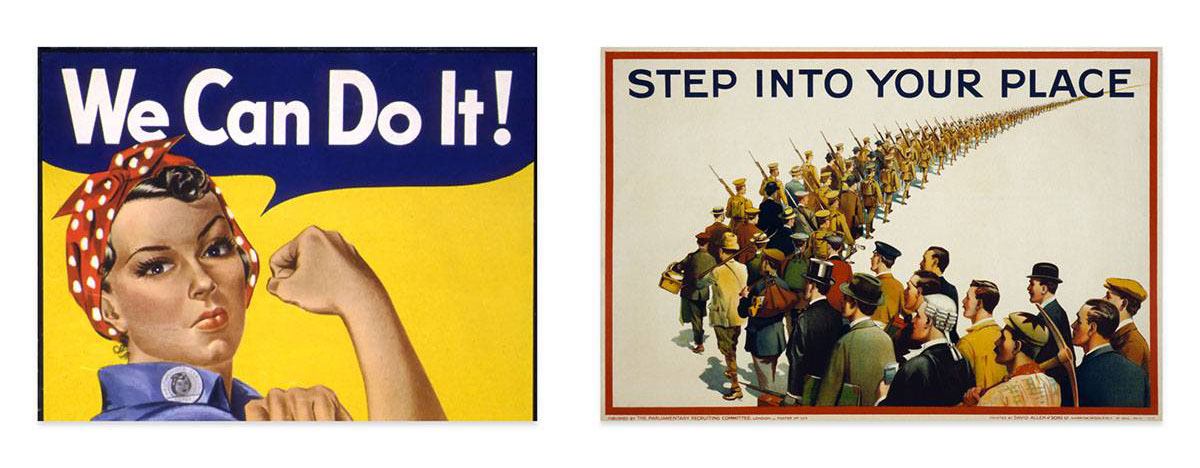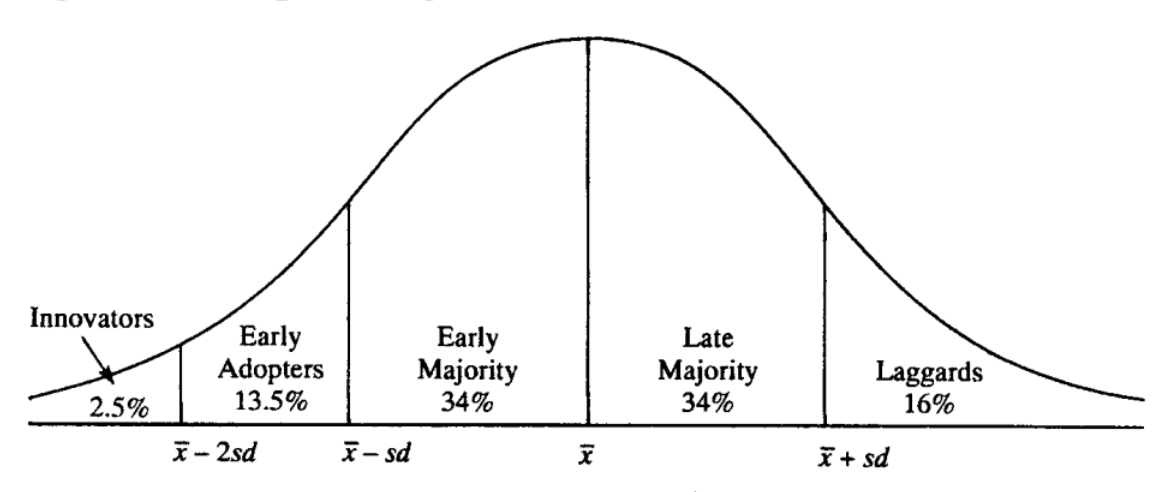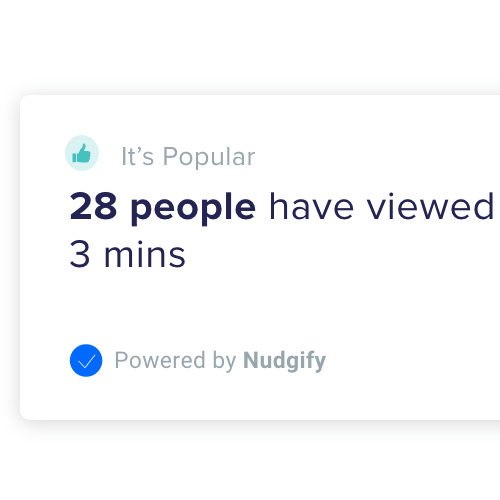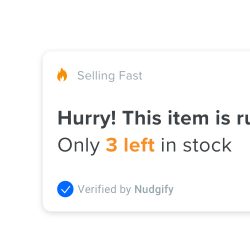Social Proof is a psychological effect that leads us to copy other people’s behaviour. It has become an important part of how businesses communicate because it helps people choose who and what to trust online. In an uncertain environment, Social Proof provides a way for consumers to make better decisions.
Social Proof Explained
- What is Social Proof?
- Social Proof Explained by an Expert
- Research on Social Proof: Why it Works?
- Examples of Social Proof
- The Importance of Real Social Proof
What is Social Proof?
The term Social Proof was first coined in 1984 by the psychologist Robert Cialdini. Building on the work of Daniel Kahneman and Amos Tversky, Cialdini described Social Proof as a kind of decision-making shortcut…
Not every time, but the crowd is usually correct about the wisdom of actions, making the popularity of an activity a stand-in for its soundness.
Because it is an important part of how consumers make decisions, Social Proof can help marketers to increase conversions, reduce bounce rates and prevent basket abandonment. This article explains exactly what Social Proof is and the science behind how it works.
Although the effect seems straightforward, Social Proof often works in complicated ways. It can take a number of forms:
- Social influence – unconsciously adopting the beliefs and choices of the majority
- Conformity – willingly imitating the behaviour of other people
- Compliance – imitating others whilst maintaining private differences
- Normative Social Influence – a kind of conscious conformity, where the individual is seeking acceptance or approval
To really understand what makes someone join a queue or jump on the bandwagon, you need to understand where it comes from. Jochen Grünbeck, author of the consumer behaviour and digital marketing handbook Smart Persuasion, explains how the effect works…

“What does Social Proof mean, and when does it happen?”
Social Proof is a psychological effect that leads people to conform. It creates a kind of herd mentality. The effect happens because people make a lot of their decisions based on feeling, rather than sitting down and thinking about it for hours. Copying what other people have done feels like a quick and easy way to make safe choices. When you start to look, you see it everywhere. It’s important for businesses to show that they’re busy, so restaurants and bars often make sure there is a queue outside the entrance. Websites do the same thing, but with different strategies.
“Where do you find Social Proof?”
Social Proof is built into the fundamental architecture of online business. Comments sections, customer reviews, even star ratings are designed to build a sense of group consensus. Star ratings, for example, have a huge impact on sales, so they’re incredibly valuable.
It’s important to think about these things because they can make or break your business. It’s especially important for smaller companies, because Social Proof is the best way to build trust with customers. It doesn’t have to be all 5-star reviews – just as long as people don’t feel like they’re the first person through the door.
“What about a new business or a website? How do you get Social Proof with low traffic?”
You need to get as many reviews from your first few customers as possible, and you need to give people a good reason to take a chance on you. A lot of websites use a test launch to gather that kind of feedback, but you can also lean on some friends to get the ball rolling.
“Do websites ever fake Social Proof? What do you think about that, and is there any way to stop them?”
Fake reviews and testimonials are a real challenge to consumer trust in online business. Social Proof is a safety net for customers, so they need to be able to believe that what they see is real. Luckily, customers are usually quite good at spotting fake reviews and there is a lot more to lose from being underhand than there is to gain. Even so, I am a passionate advocate for ethical Social Proof.
Whilst technical solutions for creating Social Proof are quite modern, the effect has been studied for over 50 years. In 1935, the social psychologist Muzafer Sherif demonstrated the influence of groups over individual behaviour in a series of extraordinary experiments. Sherif asked his subjects to estimate the speed and direction of a stationary dot (it appeared to be moving due to the Autokinetic Effect), and compared their estimates when participating alone and as part of a group. In most cased, the group produced a significant change in the amount of movement his subjects perceived.

More recently, in a 2008 experiment, Mathew Salganik (Professor of Sociology at the University of Princeton) explored the effect of Social Proof on personal preferences. Salganik created an artificial music sharing platform with built-in popularity rankings. Whilst the songs were real, Salganik introduced his own (invented) popularity rankings. Some of the songs, including two of the least popular songs on the platform, were given inflated rankings. Remarkably, he found that the songs with artificially enhanced popularity became his participants’ favourites. Salganik concluded that:
…most songs experienced fulfilling prophecies, in which perceived—but initially false—popularity became real over time…
In 1969, the sales and marketing expert Cavett Robert published Human Engineering and Motivation. In a section where Robert imagined selling to a “Mr Jones”, he famously stated:
95 % of people are imitators and only 5% initiators…people are persuaded more by the actions of others than by any proof we can offer.
However, it took another 15 years for the term Social Proof to be applied to marketing. The psychologist and marketing writer Robert Cialdini coined the term in his 1984 book Influence, where it was one of his six Principles of Persuasion. Cialdini’s Influence drew from his work with the sociologist Noah Goldstein. In 2008, they studied the effect of Social Proof on the behaviour of hotel guests. Their experiment compared the effectiveness of different kinds of messaging in persuading hotel guests to reuse their towels. They compared two signs: one giving an environmental justification and the other simply noting that the majority of guests reused their towels.
Group A
Help save the environment by reusing your towels
Group B (Social Proof)
Join your fellow guests in helping to save the environment
Group A (who received the industry standard environmental message) recycled their towels 35.1% of the time. Remarkably, the group exposed to the Social Proof message (B) recycled their towels 44.1% of the time. This experiment, and others like it, has led to serious discussions among policy makers about the ethics and efficacy of using cognitive biases and psychological influence to guide behaviour.
Adverts often sell us products by showing how popular they are. Rather than persuading us with statistics or facts, they rely on our assumption that other people are making good choices. This strategy was a distinctive feature of early cigarette advertising and, more recently, has been used to encourage smokers to quit. For example, a famous study from 1984 showed that peer-based social influence was the most effective strategy for preventing adolescents from taking up smoking.
One of the best examples of Social Proof as a marketing strategy is the use of social persuasion in First and Second World War propaganda. Official posters encouraged people to join the war effort by encouraging an impression of national consensus.

However, local authorities and institutions often use subtler forms of group persuasion to alter public behaviour. In 2014, a school in the Netherlands managed to increase sales of fruit in its canteen by 35% by installing signs that said most pupils were health-conscious. On a larger scale, researchers managed to reduce pollution by paper-manufacturing businesses by 30% in a 2011 study conducted in India. The researchers simply ranked paper manufacturers according to a “Green Rating” system and shared the results between them.

The influence of conformity is an important consideration for businesses whose products are technological and disruptive. Not everyone adopts new ideas straight away, and the majority of people wait until others have made the change. Because of this, tech companies often overstate the popularity of their solutions. Late Majority adopters are more likely to buy something that they believe other people are using.
Social Proof is an important part of online marketing because customers use it to judge things they can’t physically see or touch. There’s a simple reason why Amazon uses a low-resolution image for star ratings: it displays hundreds of stars on each page.

Customer reviews and recent sales notifications (“Sales Pops“) feature in the majority of online purchases, building confidence in a product and adding a sense of urgency to the purchase. However, Social Proof marketing also includes common features such as “people like you” recommendations and “clickbait” headlines.
Using statistics in headline is a powerful way to insert Social Proof in headlines. See this list of examples from famous online magazines:
- 91.9% of Small and Medium Business owners say that their company’s reputation accounts for at least 25% of its value (PR Week, July 2018)
- 83% of customers trust reviews and ratings more than advertising (StatusLabs, 2019)
- The star ratings that provide the highest number of sales across all product categories are between 4.2 and 4.7 stars (Spiegel, 2019)
- A one star increase in a product’s star rating can increase sales by 7-9% (Harvard Business School, 2016)
- Only 5% of customers would use a business with a 1 star rating (RevLocal, 2018)
- Only 53% of people consider a product or a business with less than 4 stars (BrightLocal, 2019) purchase probability star ratings
- 84% of people discount Social Proof older than 3 months and only 1% trust reviews older than one year (BrightLocal, 2019)
- 95% of customers say they often read reviews before making a purchase (Spiegel, 2019)
- 72% of customers say they never make a purchase until they have read reviews (Testimonial Engine, 2019)
- A Product with 5 reviews is 270% more likely to be purchased than one with 0 reviews (Spiegel, 2019)
- 82% of consumers look for negative reviews to prove that a collection is legitimate (PowerReviews, 2015)
- The average consumer reads 10 reviews before feeling able to trust a business (BrightLocal, 2019)
Because the internet provides an overwhelming amount of choice and information, consumers use mental shortcuts (called “heuristics”) to help process it. Heuristics help people choose which products to buy or whether to trust a website.
By understanding these shortcuts, marketers can create more user-friendly and persuasive websites. However, there is an important difference between persuasive marketing and misleading content. Fake Social Proof, such as artificial reviews and ratings, risks undermining confidence in your products and your business.
Social Proof apps like Nudgify verify every notification that appears on your website. That way, your customers know they can trust each Popularity, Recent Activity and Review Nudge they see.





